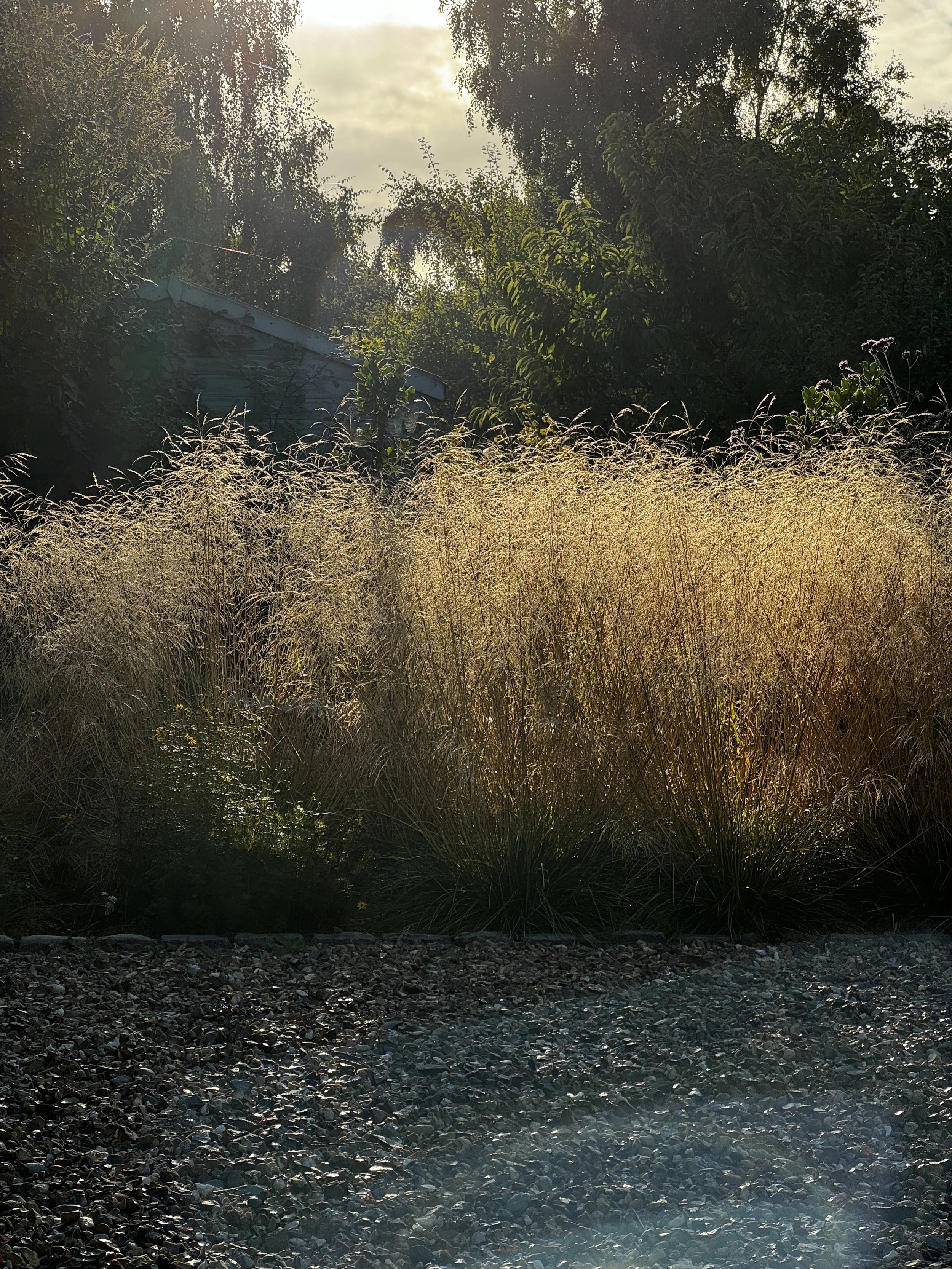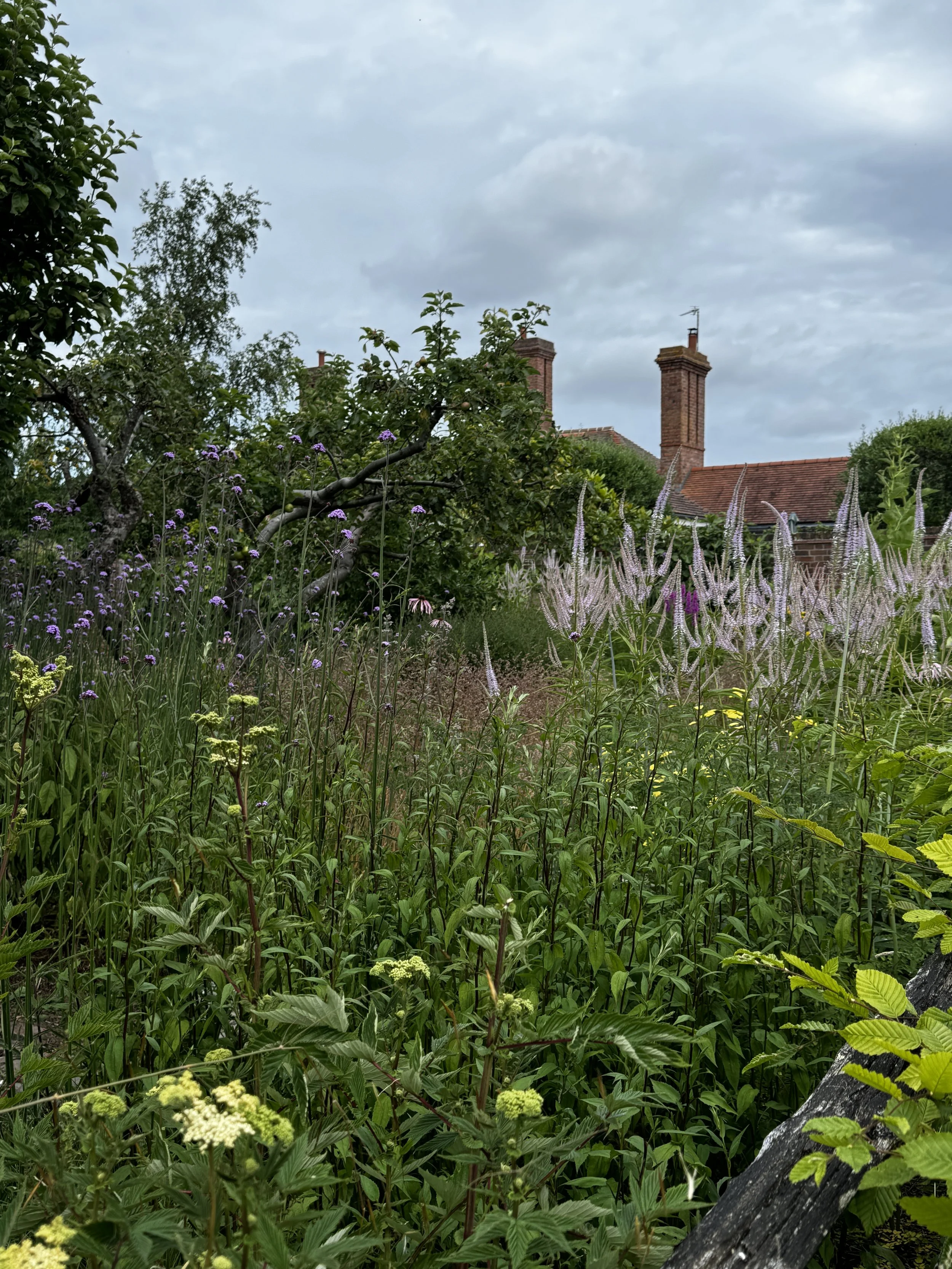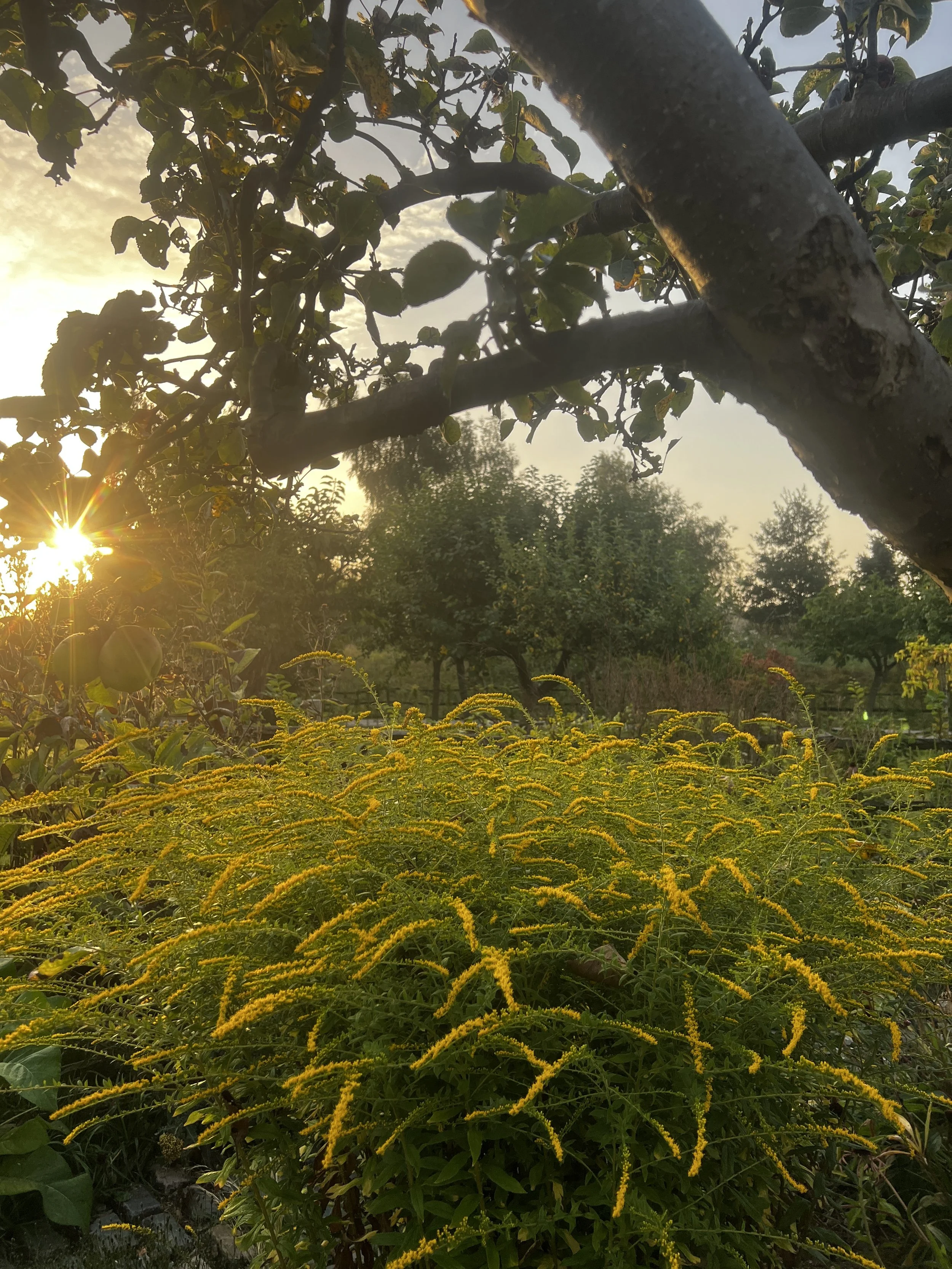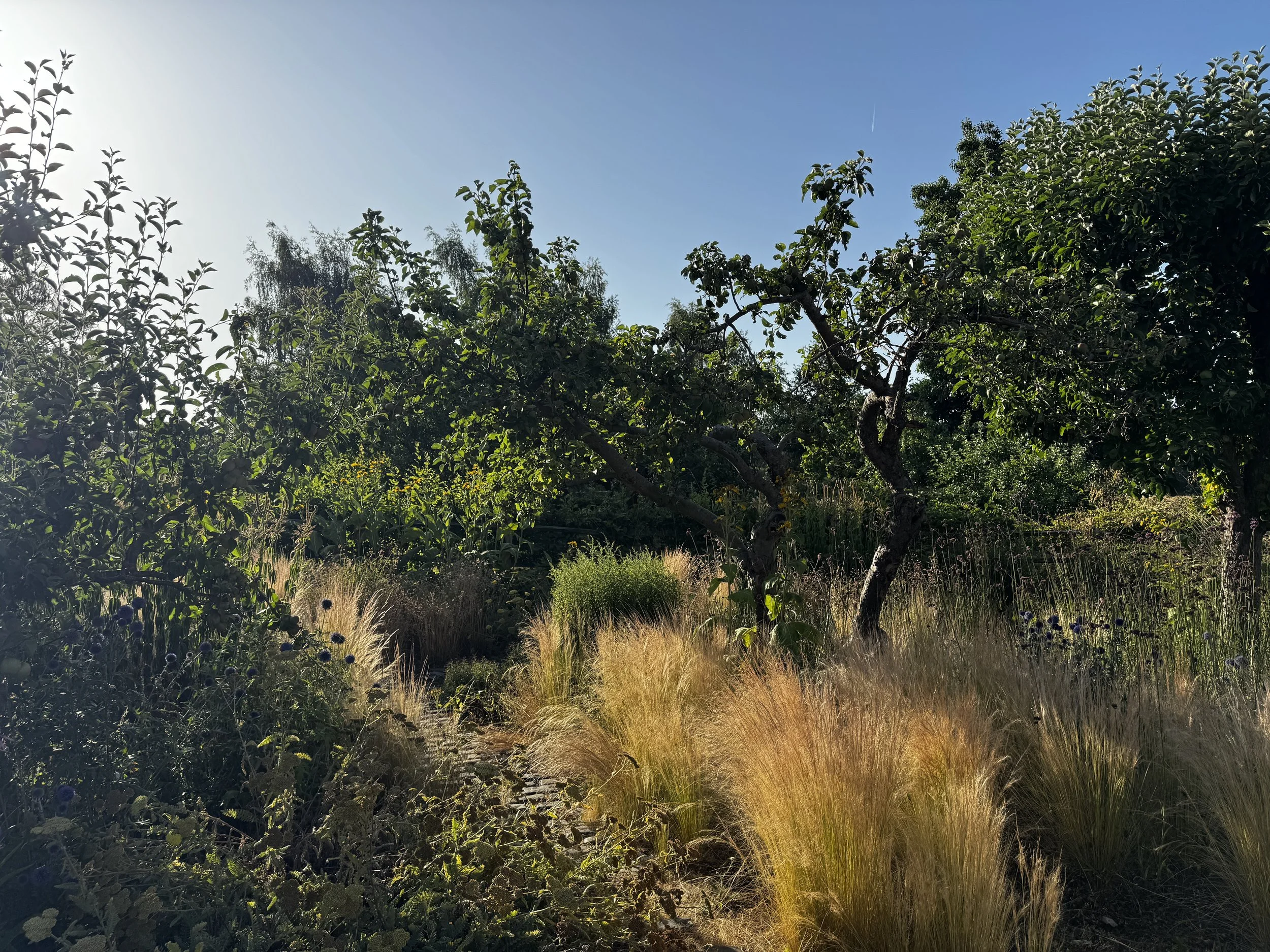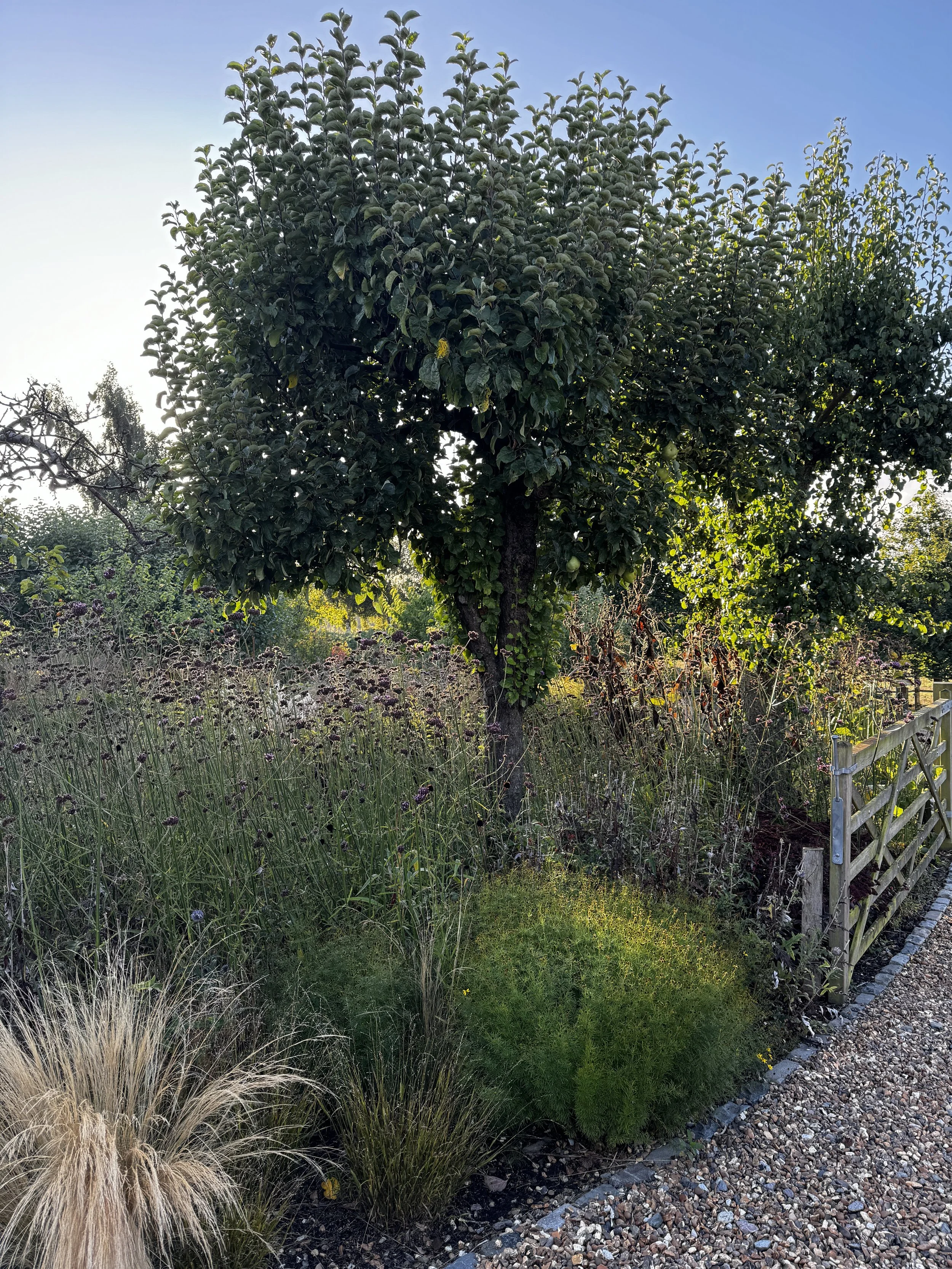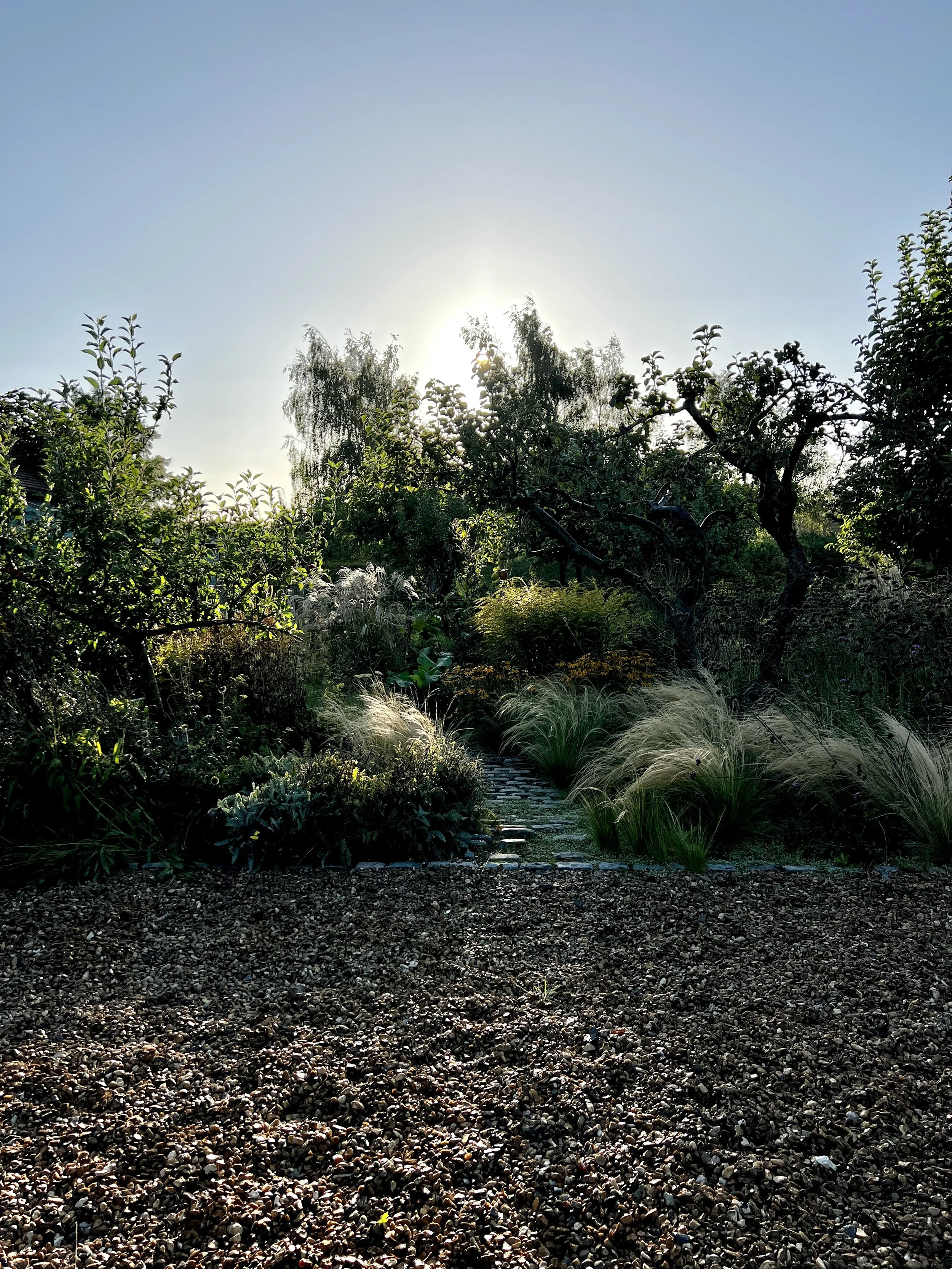The Living Framework: Why Planting Is the Heart of Every Garden
For us, planting is what turns a design into a garden. It's not decoration or an afterthought. It's the life, the character, and the ease we're after from the start. We often meet people who want a garden that feels calm and easy to live with. Many assume that the best way to achieve that is by keeping planting to a minimum. In our experience, the opposite is usually true.
A garden without much planting might look simple at first, but it rarely stays that way. Bare soil invites weeds, hard surfaces feel harsh, and the space often lacks depth and movement. It starts to feel more like a set of materials than a living place.
When a garden is rich with planting, everything begins to settle into harmony. Trees, perennials, ornamental grasses, and bulbs fill out, their roots knit through the soil, and the space softens. Once established, a densely planted bed leaves little room for weeds and often needs less maintenance than mostly empty ground.
There's another kind of change that happens too. The more planting there is, the easier it becomes to accept a touch of wildness. A seedling that's found its own spot, a grass leaning into a path, a perennial flowering a little differently each year. These things add life and character. When you start to notice them, you spend less time trying to control the garden and more time enjoying how it evolves.
Planting also brings a deeper sense of connection. It draws birds and insects, changes with the light, and brings scent and texture that can't be designed any other way. It's good for the environment, but it's also good for us. Spending time in a space that's alive and growing has a quiet, grounding effect.
One of our favourite examples is a garden we designed and built in Barford. The space sits on the approach to the property, a transitional area between house and landscape. Rather than treating it as a formal entrance or purely functional route, we designed it as a living composition of planting. There are no hard boundaries or fixed focal points, just layers of perennials, ornamental grasses and shrubs that move gently with the seasons. The beauty and form of the planting became the function of the garden. It softens the architecture, welcomes you home, and changes subtly each day. A space to be observed rather than managed.
For us, planting is what turns a design into a garden. It softens structure, adds rhythm, and brings everything together until the whole space feels as if it truly belongs.

